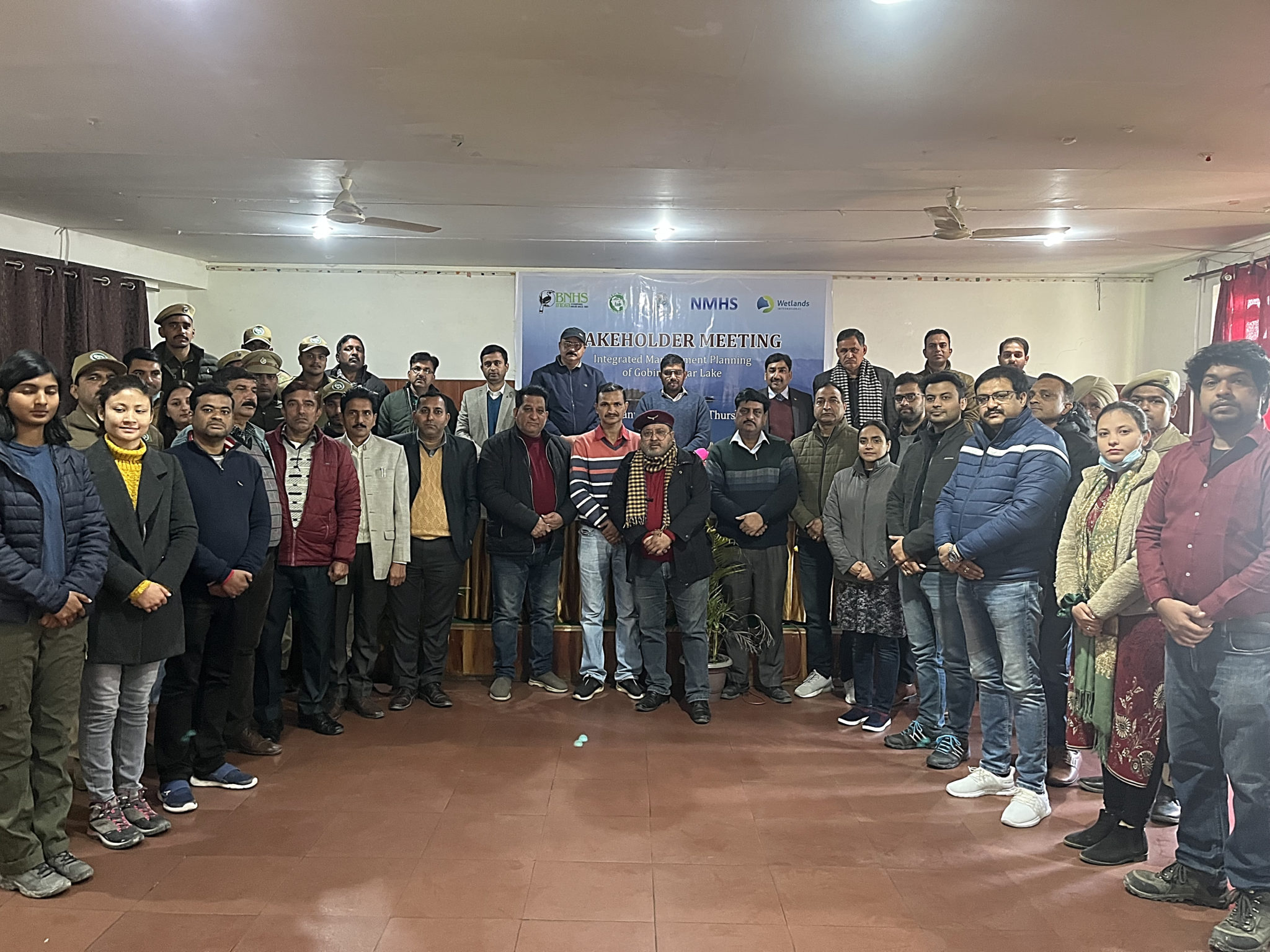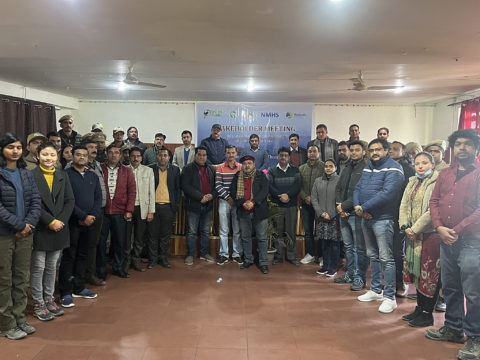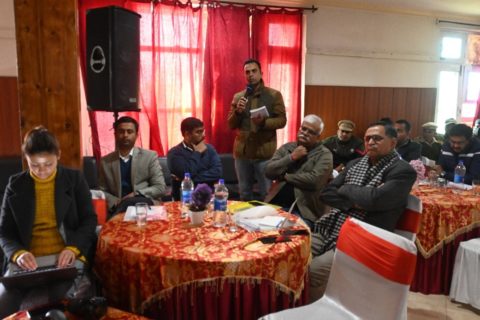
Gobind Sagar Lake Pushes for Integrated Management Planning for Conservation and Wise-use of Migratory Birds Habitats
-
Integrated management planning

The Central Asian Flyway (CAF) is one among the nine flyways in the world. Some of the major traditional wintering grounds and stopover sites for the migratory birds of the CAF are located in India. Gobind Sagar and Naina Devi Sanctuary in Himachal Pradesh attract thousands of wetland-dependent and terrestrial birds that are of conservation significance and need integrated management interventions. To further this, a state level stakeholders’ consultation meeting was organized by Wetlands International South Asia in collaboration with Bombay Natural History Society (BNHS) and Himachal Pradesh Forest Department under the purview of National Mission of Himalayan Studies (NMHS) programme, a MoEFCC’s centrally sponsored scheme. The meeting was organized to seek views and suggestions from concerned stakeholders on conservation and wise-use of Gobind Sagar. It was attended by about 50 representatives from twelve state government departments, regional knowledge institutions, civil society organizations and community-based organizations.
The inaugural session saw the presence of esteemed guests including Mr Awani Bhushan Rai, Divisional Forest Officer, Bilaspur Division; Mr Ravi Sharma, Scientific Officer, Himachal Pradesh State Wetlands Authority and Dr Anil Kumar, Scientist – E, Zoological Survey of India, Dehradun. They shed light on the rich biological diversity of the wetland, the need for its conservation and the potential to designate it as a wetland of national and international importance under respective regulations and commitments.

Technical experts from Wetlands International South Asia apprised stakeholders on ecological character of Gobind Sagar Lake, national guidelines on Integrated Management Planning of wetlands for conservation and wise-use, project related activities and outcomes and the role of stakeholders in management planning. Experts from BNHS informed participants about the National Action Plan for Central Asian Flyway (2018-2023) and how it will be used while devising management actions for Gobind Sagar.
Representatives of the state departments and regional knowledge institutions shared their inputs regarding perceived importance and benefits, challenges and threats, and suggested management interventions for Gobind Sagar. This was followed by mapping interest and influence of all stakeholders to identify their role in integrated management of the wetland.
As an outcome of this meeting, Wetlands International South Asia and BNHS will engage with all line departments under the supervision of the Himachal Pradesh Forest Department and Himachal Pradesh Wetland Authority to prepare the Integrated Management Plan (IMP) for Gobind Sagar Lake.
